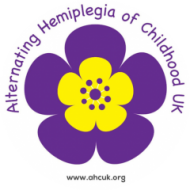Sara Zagaglia, Dora Steel, S Krithika, Laura Hernandez-Hernandez, Helena Martins Custodio, Kathleen M Gorman, Aikaterini Vezyroglou, View ORCID Profile Rikke S Møller, Mary D King FRCPCH, Trine Bjørg Hammer, View ORCID Profile Robert Spaull, Walid Fazeli, Tobias Bartolomaeus, Diane Doummar, Boris Keren, Cyril Mignot, Nathalie Bednarek, J Helen Cross, Andrew A Mallick, Alba Sanchis-Juan, Anna Basu, F Lucy Raymond, Bryan J Lynch, Anirban Majumdar FRCPCH, Hannah Stamberger, Sarah Weckhuysen, Sanjay M Sisodiya, Manju A Kurian
First published January 27, 2021, DOI: https://doi.org/10.1212/WNL.0000000000011543
This is a paid access journal via © 2021 American Academy of Neurology – Abstract summary attached below:
Abstract
Objective: To explore the phenotypic spectrum of RHOBTB2-related disorders, and specifically to determine whether patients fulfill criteria for alternating hemiplegia of childhood (AHC), we report the clinical features of 11 affected individuals.
Methods: Individuals with RHOBTB2-related disorders were identified through a movement disorder clinic at a specialist paediatric centre, with additional cases identified through collaboration with other centres internationally. Clinical data was acquired through a retrospective case-note review.
Results: 11 affected patients were identified. All had heterozygous missense variants involving exon 9 of RHOBTB2, confirmed as de novo in nine cases. All had a complex motor phenotype, including at least two different kinds of movement disorder, e.g. ataxia and dystonia. Many patients demonstrated several features fulfilling the criteria for AHC: 10 patients had a movement disorder including paroxysmal elements and eight experienced hemiplegic episodes. In contrast to classical AHC, commonly caused by mutations in ATP1A3, these events were only reported later in RHOBTB2-mutation-positive patients, from twenty months of age. Seven patients had epilepsy, but of these, four achieved seizure-freedom. All patients had an intellectual disability, usually moderate to severe. Other features include episodes of marked skin colour change and gastrointestinal symptoms, each in four patients.
Conclusion: Although heterozygous RHOBTB2 mutations were originally described in early infantile epileptic encephalopathy (EIEE64), our study confirms that they account for a more expansive clinical phenotype, including a complex polymorphic movement disorder with paroxysmal elements resembling AHC. RHOBTB2 testing should therefore be considered in patients with an AHC-like phenotype, particularly those negative for ATPA1A3 mutations.
Received May 5, 2020.
Accepted in final form December 9, 2020.
© 2021 American Academy of Neurology

